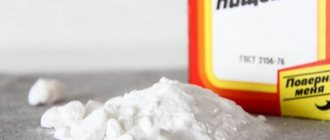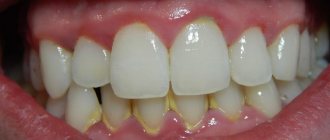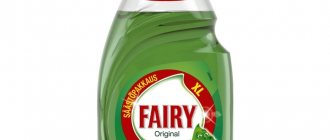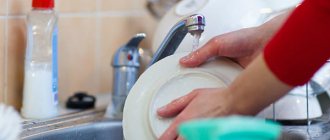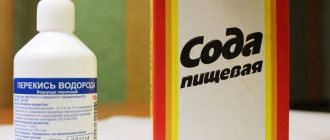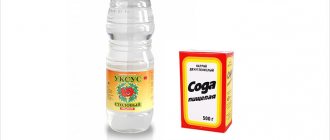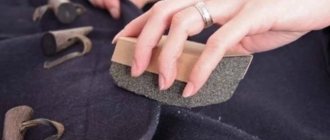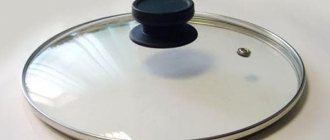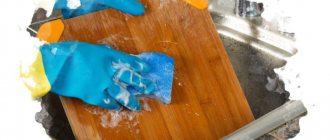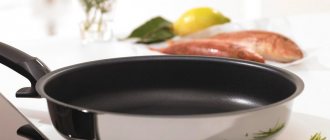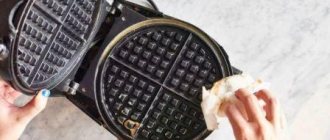Our grandmothers used office glue to remove carbon deposits on pots and pans. They had no other choice, because the only household chemicals sold in stores were dark brown bars of soap with the numbers “72%” embossed on them. One could only dream of specialized gels and powders, but people did not give up and invented effective ways to put kitchen utensils in order.
Why are office glue and soda used to clean pans and pots?
Plastic containers with a transparent substance for gluing various materials have been familiar to many since childhood.
The capabilities of office glue are not limited to this fastening property. Dish cleaning glue is used in tandem with many other home remedies. Thus, the result of washing efficiency is increased.
Removing long-term carbon deposits is not a problem, because liquid glass contains alkaline compounds. Stationery glue is the general name for a substance that has several varieties.
When the necessary chemical cleaning agent is not at hand, compositions designed to solve other problems are used.
As for soda, it is difficult to doubt its cleaning properties. It removes significant stains easily when used correctly.
Soda perfectly activates the removal of dirt from the walls of containers.
Attention! Dishes are cleaned using soda ash from a household chemical store. However, you can replace it with a food product that is accessible to every housewife
We clean with commercial chemicals
If the housewife does not have time, you can buy a ready-made household cleaning product. It can be in the form of gel, powder, cream.
Simple stains can be dealt with by:
- "Fairy"
- "AOC"
- "Sorti"
- "Frosch"
- "Pemolux"
- "Comet"
- "Silit"
- "Domestos"
- "Mr. Muscle", etc.
Stronger and caustic substances remove old dirt and soot. They act instantly and remove almost any stain. Before using them, it is better to wear a respirator and gloves to protect the skin and respiratory organs from negative effects.
Suitable options for dealing with persistent problems are:
- "Shumanit"
- "Wizard-Antinagar"
- any substance that cleans sewer pipes and bathtubs.
What nuances need to be taken into account?
When using such methods, you should remember some nuances.
The suggested recipes are not suitable for cleaning:
• shiny dishes (the shine will disappear);
• teflon;
• vessels with plastic elements (handles, if possible, must be unscrewed);
• products made of wood or containers with wooden and bone handles: the varnish will peel off, the wood and bone will become rough.
The cleaned metal loses its natural non-stick coating and food begins to stick to the pan during frying. To avoid such disappointments, you need to process it using any of the following methods.
• Grease the frying pan inside and out with oil and bake in the oven at 200°C for 30 minutes. After the designated time, take it out, cool, apply another layer and fry again. Instead of olive oil, you can use burdock oil: it dries out faster.
• Heating pans with a mixture of oil and salt (1 tablespoon each) also has a positive effect. If after the first treatment the proper results are not obtained, the procedure must be repeated.
After such cleaning methods, duralumin dishes must be boiled for 2–3 minutes, filled with water so that the aluminum oxidizes.
Despite the abundance of detergents and cleaning products, old, practice-tested methods, due to their safety for health, are widely used at home by modern housewives.
How to restore non-stick coating
- The oven is heated to t=200 °C. The frying pan is greased on all sides with vegetable oil. It is better to use burdock or olive. The greased utensils are placed in the oven for half an hour, then again smeared with oil and re-calcined.
- Oil is mixed with salt in equal proportions. Rub the prepared mixture onto the frying pan and bake in the oven for about 30 minutes.
- If the frying pan is aluminum, to restore the non-stick layer, pour water into it and boil for at least 5 minutes. During boiling, the aluminum oxidizes and food will no longer stick to the bottom of the pan.
Soda, glue and soap for cleaning dishes
To quickly and efficiently clean dishes in the kitchen, you will need the most common ingredients: soda ash, office glue and laundry soap. Difficulties can arise only with Na2CO3, so it is worth looking for it in advance in the hardware departments of industrial goods stores. The price starts from 30 rubles. for 0.5 kg. After fruitful and long-term use, any saucepan will lose its original shine. You can restore its aesthetic appearance by boiling the pots in a soda-glue solution.
- Prepare a large basin or bucket. Pour in 20 liters. water, place on the stove and wait until it boils.
- Pour 500 g into boiling water. Na2CO3 and 400 gr. adhesive composition. Then wait until the ingredients dissolve and place the pots that need cleaning into the basin.
- Reduce heat and leave them to soak for 30-60 minutes. Then rinse without using additional cleaning chemicals.
If there is no need for a large volume of cleaning solution, you can use reduced proportions: mix 80-100 grams in a bucket of warm water. adhesive composition, 100-150 gr. Na2CO3. After stirring, place the pots and pans there, then leave the bucket on the stove until it boils. As a final step, wait until everything cools down and rinse without detergent.
This miracle remedy was also used by Soviet housewives, who proved its effectiveness in the fight against “centuries-old” fat deposits:
- Take 1/3 of a standard bar of laundry soap and 1 tbsp. PVA glue.
- Dissolve the components in warm water; it is advisable to first cut the soap with a well-sharpened knife - this will dissolve faster.
- Place what needs to be cleaned into the resulting mixture.
In addition to metal and ceramic items, glass and porcelain items can also be tidied up in this way. When everything is in place, boil for half an hour.
What you can boil and what you can’t
Not all kitchen utensils are allowed to be boiled in such a soda-soap solution with glue. The hot method is not suitable for washing plastic dishes, as well as:
- varnished products (the top layer will wash off or crack);
- wooden spoons;
- graters;
- frying pans with Teflon (it will be damaged and stop performing its functions);
- aluminum (at high temperatures this metal begins to darken; it can only be soaked in warm water and soda or cleaned with a soft sponge and soap);
- shiny glasses and other utensils with a coating (the shine will disappear and the items will need to be restored).
A soda-soap-glue solution perfectly washes glass, especially heat-resistant containers for baking in the oven, as well as enameled and cast iron objects.
Copper is a fairly soft metal that cannot be rubbed with a hard brush. For cleansing, use lemon juice, hydrochloric acid, chalk, and kerosene.
Nickel also does not favor soda with glue. Rock salt, vinegar and ammonia are suitable for him.
Stainless steel can withstand boiling, like ceramics, but it is best to simply soak products made from these materials in a cleaning solution and use soft sponges.
It is better to boil the dishes in a cleaning composition with office glue as soon as dirt appears on them, although the product does an excellent job of removing thick scale and old grease. It quickly returns kitchen utensils to their original appearance without the use of chemically hazardous ingredients that are found in many modern powders and gels.
Possible composition options
As mentioned earlier, the product contains alkaline elements that help quickly remove carbon deposits. Chemicals react at elevated temperatures, and contaminants are gradually eliminated.
Potassium and sodium contained in the glue have a powerful effect against burnt fat. Therefore, there is a chance to save your favorite frying pan and restore its presentable appearance.
How to boil a pot with soda ash
Silicate glue and soda ash for cleaning frying pans have been used by many housewives for decades. It is enough to mix the two ingredients to a thick sour cream and process the walls and bottom of the vessel.
Silicate glue and soda ash for cleaning frying pans have been used by many housewives for decades.
Cleaning pans with soda and glue is carried out using a hard scraper if we are talking about a cast iron structure. In other cases, you will have to limit yourself to a sponge. You can also make a non-concentrated soda solution and boil the dishes in it if the contamination is not severe.
Soda, office glue and dish soap
All of the above substances are diluted in a dirty container filled with water. Bring the liquid to a boil. Reduce the flame of the burner and keep it on the stove for several hours.
If not only the internal surface, but also the external one is contaminated, you will have to use additional containers, more contaminated ones.
If not only the internal surface, but also the external one is contaminated, you will have to use additional containers that are larger than the contaminated one. The manipulation should be repeated in the same order, placing the frying pan or saucepan in a bowl.
Soda and mustard for washing dishes
Powdered substances must be mixed until a homogeneous mass is obtained. A little water is added to the resulting mixture. And then dip a stiff brush into the mixture and treat the burnt areas of the product.
Powdered substances must be mixed until a homogeneous mass is obtained.
Thus, the carbon deposits gradually disappear. After which the vessel is rinsed under running water. And if necessary, repeat the procedure.
Hydrogen peroxide and baking soda for cleaning dishes
Sprinkle a little baking soda onto the contaminated surface. Then spray with hydrogen peroxide from a spray bottle. A reaction occurs, accompanied by hissing.
The stains disappear after a few seconds, and the surface remains intact and unharmed.
Burnt stains along with the resulting slurry are rubbed with a sponge. The stains disappear after a few seconds, and the surface remains intact and unharmed.
Laundry soap and soda for washing dishes
Laundry soap is crushed and mixed with soda, obtaining a homogeneous consistency. This home remedy should only be used on wet dishes.
The wet, dirty surface is thoroughly coated with the cleaning composition and left for an hour.
The wet, dirty surface is thoroughly coated with the cleaning composition and left for an hour. Then clean thoroughly with a scraper or brush.
Cleaning with PVA glue
Do not use PVA glue for cleaning yourself. It is used in tandem with soda or soap. Polyvinyl acetate is mixed with soda powder and the surface of kitchen utensils is treated.
Polyvinyl acetate is mixed with soda powder and the surface of kitchen utensils is treated.
They also make a special solution with soap shavings, which then needs to be boiled. This method is long and requires effort. However, it is considered effective and has been tested by many consumers.
Baking soda and bite for cleaning dishes
Since vinegar is classified as an acidic liquid, it is often used in cleaning kitchen structures. It easily copes with rust, grease and carbon deposits.
Vinegar easily copes with rust, grease and carbon deposits.If you use it together with soda, the cleaning effect improves significantly. Baking soda reacts with vinegar to remove light stains in an instant. You don’t need to put in much effort to prepare this cleaning product. You just need to sprinkle the stained area with baking soda and sprinkle with vinegar.
Recipe with PVA glue
In water, previously filled to the middle in a metal vat, mix: 150 grams of PVA glue and ground laundry soap (1 piece). The mixture is brought to a boil and stirred periodically to ensure a homogeneous mass. After boiling, the heat is reduced and utensils are placed into the mixture. Cook for no more than two hours. After the required time has passed, the mixture is poured out, and the kitchen utensils are taken out and washed with a sponge in plain water. Cast iron can be wiped with a wire brush, and if the utensils are aluminum, then a couple of tablespoons of soda are added to the boiling mixture to avoid darkening of the metal.
Recommendations
Expert advice will help you remove carbon deposits from the pan without damaging it:
- Special products in the form of sprays should only be used in conditions of good ventilation.
- Powdered cleaning products may leave scratches on the surface even if a soft sponge is used. Gel and liquid formulations are preferable in this regard.
- Before purchasing a household chemical product, you should study not only the procedure for working with it, but also clarify for which surfaces of the dishes the product is intended.
- You should not use a pan with carbon deposits that have not been removed for cooking, as this not only affects the taste of the food, but can also be harmful to health.
- Removing carbon deposits inside and outside the pan is a mandatory condition of operation, as it not only maintains the hygiene of the dishes, but also extends their service life.
The appearance of soot can be caused by insufficient cleaning of the pan before use, as well as physical defects in the coating.
Methods and means for cleaning various surfaces from carbon deposits are presented in this section.
Rules for the use and care of utensils made of metal and ceramics
We figured out how to clean a frying pan and other utensils from grease and carbon deposits, armed with everything you need at home. To ensure that the result pleases you for a long time, follow some rules:
- Don't neglect using a wooden or ceramic spatula when cooking.
- Do not use abrasives. Avoid hard metal brushes. This is especially true for aluminum cookware. In the resulting scratches, oxide appears, which gets into food and is harmful to health.
- Melamine sponges are good for cleaning ceramics, but only for external surfaces. Melamine should not be used to clean areas that come into contact with food.
- Even if you wash your dishes regularly in the dishwasher, give your dishes a thorough hand cleaning periodically. This makes it easier to notice accumulated carbon deposits in hard-to-reach places.
We hope you will no longer encounter the problem of how to clean a frying pan from carbon deposits outside and inside. At home, all cleaning procedures are quite simple and do not require much expense or time. If in the process of caring for utensils you have to choose between traditional products and household chemicals, use both options. You might be interested in reading: How to clean a washing machine from odors, dirt and mold
Boiling glass, ceramic, aluminum dishes: which ones can be boiled and which ones cannot
To deal with minor stains, boil kitchen utensils using a baking soda solution.
Glass
Such dishes must be regularly cleaned of dust and yellow deposits. For shine and strength, place it in a large container of cold water and bring to a boil over low heat.
After it boils for 15 minutes, add 2-3 tbsp. l. soda and continue boiling for another thirty minutes.
Carefully remove the dishes, let them cool, then rinse them with cool water and put them in the cupboard.
Ceramics
Ceramics are unpretentious in use, which is why housewives love them so much. Usually, laundry soap and a soft brush are enough to remove all dirt in hard-to-reach places. But if you feel that the coating on the ceramic is too persistent, you can boil it off.
Boil the dishes with 1 tbsp. l. soda and washing powder. After boiling, let the ceramics cool and put them on a shelf.
Aluminum
The beauty of aluminum lies in its shine; it's always nice to look at a polished, sparkling pan. It’s easy to achieve this result using boiling - place the dishes in cold water with 2 tbsp. l. wine vinegar and soda and boil for 15 minutes. After that, all you have to do is wipe everything with a fluffy cloth.
Plastic
Many people prefer this type of cookware because it is bright, beautiful, lightweight and easy to clean. You can boil plastic that is labeled “heat resistant,” otherwise you risk melting the item. In general, boiling such dishes to remove plaque is not required; it is easily washed off with a sponge and detergent.
The main difficulty in caring for plastic utensils is the problematic elimination of odors that are absorbed into the material during interaction with food. This can be easily fixed by rubbing the utensils with activated carbon or soda. Leave for a couple of hours and rinse with cold water - the odors will disappear.
Dishes that should not be boiled
Earthenware and porcelain are among the most fragile and difficult to care for materials. If you use such cookware, handle it with care and never expose it to high temperatures.
Boiling earthenware and porcelain is strictly prohibited - this will make the dishes fragile and damage the unique painting.
Causes of rust and ways to remove it
Cast iron frying pans from famous brands are calcined before being released onto the market, and the highest quality alloys are used in their production. Inexpensive models may contain impurities that contribute to the appearance of rust.
But improper care of the product can also cause corrosion. This occurs when using aggressive detergents that contain alkali. And also when washed in the dishwasher.
Other causes of rust may be:
- rare use of utensils;
- scratches from sharp objects;
- storage in damp conditions.
Another reason is if you forgot to heat the cast iron frying pan before use. Thus, improper use causes surface destruction due to oxidation.
Rust is dangerous to health because it contains iron. Its excess impairs the functioning of internal organs - liver, intestines, kidneys. Problems with the skin and teeth may appear.
We offer several ways to remove rust from a cast iron frying pan at home.
Digestion
Boiling is an excellent way to remove rust because... There are a lot of available tools that do not require investment.
With laundry soap
You need to take a bar of soap, grate it and put it in a large container. Pour a glass of hot water over the mixture and stir until the chips dissolve. Then the frying pan is immersed in the solution, adding the required amount of water. The dirty frying pan is immersed in the mixture and boiled for 30 minutes.
With Coca-Cola
The main advantage of this drink is that it can remove even the oldest rust. You need to pour cola into a frying pan, place the container on the stove, boil and simmer for about 10 minutes. After this, leave the liquid to cool, wash the surface of the dishes with a brush and detergent.
Metal sponge or sandpaper
Using a hard metal sponge, you can remove even old layers from a cast iron container. To do this you need:
- Walk the surface in a circular motion.
- Rinse the pan with warm water, or use dishwashing detergent.
Often, after such treatment, scratches remain on cast iron cookware. To clean them, you need to sand the pan again with fine sandpaper. And to increase cleaning efficiency, you can take a drill with a special attachment.
Cleaning a cast iron frying pan using folk remedies
To remove fresh traces of corrosion, you can try using baking soda:
- Mix baking soda with a little water to make a paste.
- Apply the resulting composition to the stains, wait 20 minutes, and wipe off any remaining corrosion with a brush.
- Squeeze the juice from the lemon and wipe off any remaining dirt.
- Wipe the surface with rolled up foil.
- Rinse.
To get rid of old traces of fat, you need to take 100 g of salt and 50 ml of vinegar. All ingredients are mixed, a small amount of water is added, the resulting slurry is greased with the surface of a cast iron frying pan. After 1-1.5 hours, the remaining rust should be removed with a steel wool.
A mixture of 1 tsp will help against corrosion. dishwashing detergent, 100 g soda, 2 tbsp. hydrogen peroxide. After mixing the components, grease the surface of the frying pan with the resulting mass and leave for about 30 minutes.
Salt, soda
To remove old corrosion and burnt grease, you need to make a paste of water, salt and soda, apply it to the stains, leave for 15 minutes, thoroughly rub with a brush and rinse in warm water.
To enhance the effect, the container must be doused with hot water before processing.
Vinegar
Vinegar is a fairly gentle product that will remove rust without damaging the protective layer.
The cleaning guide is simple:
- Take water and table vinegar in a ratio of 3:1.
- Fill the mixture with water to the brim.
- Boil over low heat for 2.5-3 hours.
- Rinse the container with running water.
If the rust is too strong, you can use vinegar and soda. The process is simple: first rub the surface of the pan with baking soda, wait a couple of minutes, then spray the dishes with a spray bottle. After the reaction has occurred, you need to rinse the container with warm water. When vinegar and soda interact, carbon dioxide is released - do not inhale it.
Fish fat
Fish oil is an effective remedy for newly developed rust. The composition is applied to the inside of the frying pan - the fat should soften plaque and rust in 2-3 hours. Then the surface is washed with warm water and the remaining dirt is removed using a metal sponge.
Folk remedies for descaling
To remove scale from a stainless steel kettle, it is recommended to use home remedies.
Those who are susceptible to allergic reactions should be especially careful in their selection. Such consequences can be caused by household cleaners, which are advisable to use only for old scale that has not been removed for a long time. Traditional methods can deal with light deposits without difficulty or harm to both the teapot and your health.
Cleanliness made easy with citric acid
Citric acid is a cleaning agent that effectively copes even with old lime deposits.
Solutions based on citric acid have a gentle effect on scale by breaking it down. The surface is not damaged.
Take:
- water – 1 liter;
- citric acid – from 10 to 20 g (depending on the degree of plaque).
Instructions:
- Pour water into a stainless steel kettle, add citric acid - no need to stir. During the boiling process, the lemongrass crystals will dissolve.
- Bring the water to a boil. After turning off, leave for half an hour/hour to act. How long to leave depends on the degree and amount of deposits.
- Drain the liquid, wait until it cools down and wash with a soft sponge and detergent.
- Pour in clean, preferably filtered water, and send it to boil again.
- After boiling, drain the water. Do not use for drinking!
Vinegar is the second most effective home remedy after citric acid.
Both the essence and table vinegar will help remove scale from a stainless steel kettle. Old plaque can only be dealt with by essence, but table vinegar can also cope with a thin layer of young scale. It is worth understanding that proportions must be observed.
For 3 liters of water you usually take:
- or 2-3 teaspoons of essence;
- or 50 ml of 9% vinegar.
Instructions:
- Mix water and vinegar selected depending on the degree of contamination.
- Pour the solution into the kettle.
- Place on the stove, close the lid and bring to a boil.
- Remove the cover to check the effectiveness of cleaning. The kettle should be removed from the stove when the scale begins to come off.
- Let the solution finish what it started by waiting half an hour.
- Rinse, refill with water and boil.
- After boiling again and draining the liquid, let the kettle dry.
Soda - simple, affordable and effective
To get rid of salt deposits in a stainless steel kettle at home, you should turn to soda.
Its effectiveness has been proven over the years - alkali easily and quickly breaks down only a thin layer of scale. Therefore, soda is recommended for preventative cleaning once a week.
You will need:
- water – 3 l;
- soda – 6 tsp. (with a slide).
Steps:
- Pour the indicated volume of liquid into the kettle.
- Add soda.
- Bring to a boil, remove from heat.
- Leave to cool so that the baking soda solution helps clear the scale. The process will take about 2 hours. The alkaline reaction of soda and water is not strong, but safe, so it takes time.
- After assessing the result, proceed to cleaning with a sponge and rinsing with water.
Methods for removing carbon deposits
Fresh dirt can be easily removed using regular detergents. But old ones that have become firmly stuck after several years of use are quite difficult. But it is possible, although it will take time.
All the methods by which old frying pans are given their original appearance can be divided into chemical, thermal and mechanical.
Chemical methods
In household chemical departments and online retailers you can find many special products for cleaning dishes from grease and carbon deposits.
Grease remover
Each product has its own method of application: some are simply applied to the surface and washed off after some time; before applying others, the frying pan is well heated over a fire.
Before using cleaning products, you should read the instructions on the packaging.
For those who do not accept chemicals or cannot use them due to skin or breathing problems, we suggest using home remedies. One of them is acetic acid. It eats away burnt fat deposits well, but lasts a long time. Therefore, the walls of the frying pan will have to be processed several times before the carbon begins to lag behind them and can be cleaned.
Acetic acid
A mixture of vinegar and soda in the form of a paste is slightly more effective. Use it to clean dirty utensils using the hard side of the dish sponge. There is also a mechanical effect, so the process goes faster.
Cleaning a frying pan with baking soda
Much less physical effort will be required for cleaning if the carbon deposits are first softened in a special solution of the following components:
- 100 g of dark laundry soap - the one with the “72%” stamp stamped on it;
- 500 g of soda ash - it is much more active than baking soda;
- 100 g silicate stationery glue.
Table. Sequence for cleaning a frying pan.
| Cleaning steps | Description |
| Step 1 | Take a basin or other container that will fit the entire frying pan. Fill it with water and place it on the stove. |
| Step 2 | When the water boils, add all the listed ingredients to it, after grating the soap on a coarse grater. Stir until dissolved. |
| Step 3 | Submerge the cast iron skillet into the simmering liquid and lower the heat, but do not turn it off. |
| Step 4 | Boil the dishes until the water darkens and the carbon deposits soften to such a state that it can be easily removed from the surface. Depending on the degree of contamination, this may take from half an hour to several hours. |
| Step 5 | Remove the pan from the solution and, when it has cooled, wash it as usual. Softened carbon deposits will easily separate from the walls. You can help him with a stiff brush, knife or other metal object. |
Thermal methods
If cast iron is heated for a long time and strongly, there will be no harm to it, but the fat deposits will burn or soften so much that it can be easily scraped off. Different heat treatment methods can be used.
- Bonfire. When going to the country or to nature, take the frying pan with you. After using it for its intended purpose, place it directly into a burning fire, and when it burns out, take it out, cool and wash. Sand can be used as an auxiliary abrasive agent. True, in this case you will also have to wash the dishes to remove soot.
- Oven. You can also heat the frying pan in the oven, especially if it is equipped with a pyrolytic self-cleaning function and can heat up to 480-500 degrees. If this function is not available, cover a baking sheet with foil to prevent melted fat and soot from staining the chamber. Place a wire rack on top of it, and place the pan on it, bottom up. Turn the oven on to maximum heat and leave for 2-3 hours. Do not forget to turn on the hood during this time and open the window in the kitchen so as not to breathe in the fumes.
- Blowtorch. Experienced repairmen use it to remove old paintwork from surfaces. You can clean the frying pan in the same way. The fire must be directed towards its walls and held until it stops smoking. Of course, this should be done outside or away from flammable materials. After that, the dishes are immersed in a bucket of cold water and quickly cleaned with a metal sponge.
Video - A simple way to clean a frying pan from carbon deposits without chemicals
If the deposit was thick and old, it may not come off completely, and in some places it will become tightly stuck to the cast iron. In this case, you need to mix table vinegar and water in equal parts in a large container, add a little dishwashing gel and immerse the cooled frying pan in it for two to three hours. And then vigorously scrub the surface with a brush or brush.
Soaking dishes before cleaning makes the task easier
How to clean a pan from carbon deposits at home
Before moving on to methods for cleaning cooking containers from carbon deposits, you need to understand what it is.
During the cooking process, it is difficult to avoid splashing of fat, which gets onto the dishes and, under the influence of temperature, is “welded” to the walls of the pans. This plaque is called soot.
How to clean a pan using effective products that are not harmful to health and are safe for coating dishes? Let's consider several ways.
Salt and baking soda
Salt and soda are the best helpers for severe stains.
If the inner surfaces of the dishes are covered with a dense layer of carbon deposits, you can deal with the problem as follows:
- Combine equal amounts of salt and soda.
- Cover the bottom of the pan with the resulting powder so that there are no gaps left.
- Add a small amount of water to obtain a paste-like mixture.
- Cover the dish with a lid and leave for a day.
- After 24 hours, you need to remove the old mixture and prepare a new one.
- Then pour water into the bowl and boil the cleaning liquid for 25–30 minutes.
- When the surface has cooled, wash it with liquid soap or dish gel.
Article on the topic: DIY number 1 for a one year old for a boy: master class with photos
Salt and soda will help remove even heavy carbon deposits and deal with old stains of grease and soot.
Salt
Fine table salt will help keep your dishes clean and shiny.
How to clean pots this way? Wet the dishes generously in cold water, and then thoroughly rub the contaminated surface with table salt (it is better to use fine salt).
Leave the container to “sour” for 2–3 hours, after which you need to remove carbon deposits and soot with the hard side of the dish sponge.
Activated carbon
Powder of 5-6 tablets of activated carbon will help get rid of burning.
This remedy is indispensable for severely burnt food or milk. How to remove stains and clean the pan from burning using this product? Prepare the powder from 5-6 tablets and scatter evenly over the bottom of the container.
After 30–40 minutes, pour warm water into the bowl and leave for an hour. After carbon deposits and grease stains, you can wash them off with a foam sponge.
Soap solution
This cleaning method is suitable for aluminum and enamel cookware, as well as stainless steel pans.
Fill the container with water, pour in a small amount of soap or dishwashing gel and boil for 20–25 minutes. As a result, the fat will dissolve, and you only need to wash the dishes with a foam sponge to remove any remaining carbon deposits and soot. This method will be effective for small contaminations. If the pan is covered with fat residue on most of the surface, it is better to use other means.
Milk serum
Due to the acid content, this product will help clean off heavy carbon deposits and remove traces of soot. You need to pour the whey into the pan so that the liquid covers the burnt areas by 1.5–2 cm, and leave for a day. After this, you can easily remove any remaining dirt using a foam sponge and detergent.
How to wash removable plastic parts
Non-metallic elements of frying pans or pots, as well as the handles of gas stoves, can be washed not only by hand, but also in the dishwasher. The main condition is that the plastic should not be soft. These parts are loaded together with other dishes and the standard mode is turned on. They should not have any labels or stickers on them so as not to damage the washing machine. If there is a function for regulating the water temperature, then it is set to a level of +30-40 degrees.
It is not always possible to quickly wash grease stains and scale from plastic parts using a dishwasher. If this fails, you will have to work hard manually. The same applies to wooden parts that cannot withstand high temperatures. It is better to soak them for 10-15 minutes in a warm soapy solution, and then wipe them with a soft sponge or toothbrush.
For thick plastic, you can use baking soda. It has good abrasive properties and gently dissolves dirt. Greasy areas can be cleaned with a melamine sponge, as well as with regular dishwashing gel.
To tidy up plastic, it is better to avoid boiling water, powdered products, scrapers and brushes, and use soft cleaning liquids, sponges and rags, as well as warm water.
Method for cleaning dishes using glue and soda
Cleaning dishes with glue and soda is a worthy answer to household chemicals, which are more effective, but the harm from its use is significant. Returning to proven and traditional methods is not only saving money, but also a good way to take care of your health.
The dish cleaner recipe can be used at home. To make detergent you will need:
- 10 liters of water;
- a bottle of stationery glue (type - liquid glass);
- 1 glass of laundry soda;
- bar of laundry soap (72%).
To prepare the product, it is best to take a metal container; an enamel coating is undesirable. Water is poured into the container, then finely grated soap is dropped into it. Next, pour soda into the container and pour out the glue. The liquid is stirred so that all components are distributed evenly. Then the basin is placed on the fire and brought to a boil. During heating, the water must be stirred to gradually dissolve the components. Dirty dishes are dipped into the prepared detergent. The liquid is brought to a boil again. The duration depends on the degree of contamination: in some cases, a few minutes will be enough; you can boil for more than an hour.
As soon as the cleansing is completed, you need to turn off the fire, wait until the liquid cools down a little, and only then take out the dishes and wipe them with a sponge or steel wool.
This method is very effective for washing cast iron pans, pots with ceramic surfaces, spoons and forks. All aluminum objects boiled in this way will not lose their color, since the product contains soda. You should be careful with plastic products. If they are not heat-resistant, then they should not be cleaned this way.
Crystal items can also be cleaned using this product. The only thing is that you can’t boil them, but you can put them in liquid with a temperature of up to 60°C.
Thanks to the presence of stationery glue in the base, any dirt can be cleaned with ease, no matter how deeply it is ingrained into the dishes. At the same time, any fat dissolves and is thoroughly removed from the surface of the dish.
If you don’t have laundry soap on hand, you can completely do without it, but the effect will be a little worse. In this case, all other components are added to the water in the same quantity and in the same sequence.
In the absence of laundry soda, table salt can be added to the product in the same amount (1 glass). In addition, instead of laundry soap, you can pour 0.5 cups of regular detergent.
The cleansing recipe may not include soda and salt. Glue and laundry soap will be enough.
To prepare the washing liquid you will need 10 liters of water, 4 tbsp. soda and 1 bottle of silicate glue.
The cooking container should also not be enameled. It is desirable that it be spacious, for example, it could be a metal basin. Pour water into it and add all the ingredients. The sequence doesn't matter. The liquid is placed on the fire and brought to a boil. Afterwards, all dirty utensils are dropped into the basin, from pots to pans. It should boil for up to half an hour, depending on the degree of contamination. After boiling, the dishes are removed from the liquid and wiped with a sponge, brush or washcloth. You need to clean it until it cools completely. This way the processing will be of better quality.
This product will help in cleaning out old dirt and grease. You will need:
- PVA glue (150 g);
- bar of laundry soap (72%);
- 10 liters of water.
The soap is ground on a grater and poured into water, and glue is poured into it. The container with this liquid is placed on the fire and brought to a boil with regular stirring so that the product acquires a uniform consistency. Lower the pot after boiling, reducing the intensity of the fire. You need to cook it for no more than 2 hours, regularly adding evaporated water. After processing is completed, the liquid is poured out and the dishes are wiped with a sponge. Cast iron pans can also be treated with a wire brush. Aluminum products without adding soda will darken.
Not all dishes can be boiled in a glue-soap solution. Teflon pans and pots, dishes with plastic elements, wooden spoons, lacquered and bone products cannot be cleaned in this way. After such cleaning, they may deteriorate: the varnish will peel off, the bone will become rough, the pots will lose their shine, etc.
Dishes made of aluminum and duralumin can be boiled in liquid, but after boiling they must be further processed: aluminum containers must be filled with water and boiled for several minutes so that the aluminum oxidizes and returns to its previous appearance.
Boiling rules
Take 5 liters of water into a bucket (preferably not enameled) and place it on low heat. Grate and add soap, stir, add soda and pour in glue. The liquid simmers slowly and all the ingredients dissolve.
Contaminated kitchen utensils - saucepans, frying pans, pots, etc. - are boiled in this composition. A 15-minute procedure removes light stains. To eliminate old ones, you need to boil for a longer time - up to 2 hours.
The dishes are removed from the bucket, the solution is washed off with water or passed over the surfaces with a sponge or scraper to remove the most stubborn soot. If there are plastic or wooden handles or other parts, they must first be removed or unscrewed.
Cutlery, pots, pans, plates with yellow spots, black bottoms, greasy stains, and thin carbon deposits do not need to be boiled or boiled. They are simply placed in a large basin and filled with soda and office glue dissolved in boiling water. This soaking helps clean out light food stains.
A soda solution with office glue works without prolonged boiling. Grease and scale, along with food debris, dissolve in hot washing liquid and are quickly washed off under running water. Duration of soaking is 1-2 hours.
Traditional methods of cleaning burnt surfaces
Some housewives believe that a burnt pan cannot be restored to its original appearance, so they decide to throw such utensils in the trash. But you shouldn't make hasty decisions. You can clean a burnt pan yourself, inside and out. Use simple grandma's methods for this:
Soda
Baking soda does a great job of removing various stains. Using baking soda, you can easily clean off burnt-on food debris. The most effective way is to pour water into a saucepan and add a couple of tablespoons of soda. Boil water in a saucepan for 20 minutes. Then wash the pan with added detergent.
Salt
You can also use salt to remove burnt-on food and clean the pan. Do not rub the pan with salt, otherwise scratches may remain. Pour salt into the burnt pan and add a little water. Wait 2 - 3 hours and then wash the pan as usual.
Table vinegar
How to clean a burnt pan with vinegar? Vinegar is a simple and effective method in this situation. Pour acetic acid into the bottom of the pan (be careful, use gloves). After 2 hours, pour out the vinegar and wash the pan with detergents. Acetic acid easily cleans burnt surfaces.
Lemon acid
How to clean a burnt pan at home? A simple and safe way is citric acid. Pour 1 liter of water into a saucepan and add 3 tablespoons of citric acid. Boil citric acid for 15 minutes. Then wash the pan with detergents. Citric acid quickly removes carbon deposits.
Milk serum
Did you know that a burnt pan can be cleaned using regular whey? Since whey does not contain as much acid as vinegar, pour the whey into a saucepan for 12 hours. After 12 hours, wash the pan with a soft sponge and detergents.
We recommend: How to restore shine to gold at home
How and what dishes can you clean with toothpaste?
Toothpaste
Few housewives know that toothpaste does an excellent job of removing greasy stains in the kitchen. It is even used to clean furniture facades, refrigerator surfaces and tiles. But how and what kind of dishes can you clean with toothpaste? Using this product, you can make dishes made from the following materials shine:
- Aluminum
- Steel with enamel
- Cupronickel
- Stainless steel
- Copper
- Cast iron
- Porcelain
- Faience
- Glass
- Nickel
- Ceramics
- Plastic
In general, almost all materials can be cleaned with toothpaste. It does not leave scratches and does not darken - this is an indispensable cleaning product for modern housewives. Apply a little paste to a napkin (if you are afraid that scratches will appear on the dishes) or a brush (for stainless steel, cast iron and other metal that is not afraid of scratches), and rub the surface of the pot, pan, spoons, forks and other items. Then rinse off the paste with water and you will see that the dishes sparkle like new.
Tips for cleaning pots and pans
Experts advise following simple rules for caring for dishes.
- Timeliness.
There is no need to wait until the kitchen utensils are covered with a layer of soot. Cleaning them later will be difficult, and in some cases impossible. A solution consisting only of water and glue dissolves fats worse than one that includes all the ingredients. - Right choice.
Experts do not give clear instructions to completely abandon store-bought products. They advise choosing the safest and cheapest way to get your dishes in order. Excluding laundry soap from the solution makes cleaning heavily soiled utensils more difficult. - Maintaining proportions. When trying to prepare an effective cleaning product at home, you often end up going overboard. You should strictly adhere to recipes if they were voiced by professionals.
Not all pots and pans can be cleaned by boiling them in a glue solution.
Preparing to Clean the Pot
Before the main work begins, the pan is soaked in a soapy solution and rubbed with a sponge or a stiff brush. Often, such measures already help remove some of the carbon deposits and make it easier to further restore the cleanliness of the dishes.
Important! Be sure to find out what material the pan is made of.
Different metals react differently to the use of cleaning products. For example, it is not recommended to use salt and other abrasives on stainless steel; soda can damage aluminum; acids can damage enamel coating. Also, you should not use aggressive or thermal methods to clean dishes made of Teflon, with non-heat-resistant plastic elements, or handles made of wood and bone.
Adviсe
You can only clean aluminum cookware that has cooled down. Otherwise, sudden temperature changes will cause the soft metal to deform. After aluminum cookware is cleaned to a shine, it must be dried. Otherwise, indelible drips and stains will remain on the shiny surface.
To avoid damaging soft aluminum, the dishes are rubbed only with special foam sponges or bamboo napkins.
Vinegar will help lighten darkened aluminum kitchen utensils. It is enough to wipe the dark stains with a soft cloth soaked in a vinegar solution (9%) and then rinse the product under running water.
Sour apples restore shine to a darkened product. All you need to do is rub the dishes with an apple cut and they will shine like new again.
What materials can frying pans be cleaned from using these methods?
There is no large list of restrictions in this case. You can clean almost any utensils this way. The exception is Teflon products. Under the influence of glue and soda, their protective coating is completely destroyed. You should not then hope for its restoration.
Cleaning with glue involves boiling the dishes. This cleaning method is only suitable for durable cookware - cast iron, ceramics, etc.
A limitation is also the undesirability of cleaning utensils with a shiny surface using the described methods. Its shelf life will not change, but it will look worse.
The shine will no longer be restored by any means or polishing.
Attention! Before you start cleaning the utensils, you should unscrew the plastic and wooden elements. If it is impossible to do this, boiling the contaminated product with soda and glue will not work.
